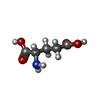Entry Database : PDB / ID : 2a5sTitle Crystal Structure Of The NR2A Ligand Binding Core In Complex With Glutamate N-methyl-D-aspartate receptor NMDAR2A subunit Keywords / / Function / homology Function Domain/homology Component
/ / / / / / / / / / / / / / / / / / / / / / / / / / / / / / / / / / / / / / / / / / / / / / / / / / / / / / / / / / / / / / / / / / / / / / / / / / / / / / / / / / / / / / / / / / / / / / / / / / / / / / / / / / / / / / / / / / / / / / / / / / / / / / / / / / / / / Biological species Rattus norvegicus (Norway rat)Method / / / Resolution : 1.7 Å Authors Furukawa, H. / Singh, S.K. / Mancusso, R. / Gouaux, E. Journal : Nature / Year : 2005Title : Subunit arrangement and function in NMDA receptorsAuthors : Furukawa, H. / Singh, S.K. / Mancusso, R. / Gouaux, E. History Deposition Jun 30, 2005 Deposition site / Processing site Revision 1.0 Nov 15, 2005 Provider / Type Revision 1.1 Apr 30, 2008 Group Revision 1.2 Jul 13, 2011 Group Revision 1.3 Jul 26, 2017 Group / Source and taxonomy / Category / softwareRevision 1.4 Oct 30, 2024 Group Data collection / Database references ... Data collection / Database references / Derived calculations / Structure summary Category chem_comp_atom / chem_comp_bond ... chem_comp_atom / chem_comp_bond / database_2 / pdbx_entry_details / pdbx_modification_feature / struct_site Item _database_2.pdbx_DOI / _database_2.pdbx_database_accession ... _database_2.pdbx_DOI / _database_2.pdbx_database_accession / _struct_site.pdbx_auth_asym_id / _struct_site.pdbx_auth_comp_id / _struct_site.pdbx_auth_seq_id
Show all Show less
 Yorodumi
Yorodumi Open data
Open data Basic information
Basic information Components
Components Keywords
Keywords Function and homology information
Function and homology information
 X-RAY DIFFRACTION /
X-RAY DIFFRACTION /  SYNCHROTRON / Combination of molecular replacement,
SYNCHROTRON / Combination of molecular replacement,  SAD / Resolution: 1.7 Å
SAD / Resolution: 1.7 Å  Authors
Authors Citation
Citation Journal: Nature / Year: 2005
Journal: Nature / Year: 2005 Structure visualization
Structure visualization Molmil
Molmil Jmol/JSmol
Jmol/JSmol Downloads & links
Downloads & links Download
Download 2a5s.cif.gz
2a5s.cif.gz PDBx/mmCIF format
PDBx/mmCIF format pdb2a5s.ent.gz
pdb2a5s.ent.gz PDB format
PDB format 2a5s.json.gz
2a5s.json.gz PDBx/mmJSON format
PDBx/mmJSON format Other downloads
Other downloads 2a5s_validation.pdf.gz
2a5s_validation.pdf.gz wwPDB validaton report
wwPDB validaton report 2a5s_full_validation.pdf.gz
2a5s_full_validation.pdf.gz 2a5s_validation.xml.gz
2a5s_validation.xml.gz 2a5s_validation.cif.gz
2a5s_validation.cif.gz https://data.pdbj.org/pub/pdb/validation_reports/a5/2a5s
https://data.pdbj.org/pub/pdb/validation_reports/a5/2a5s ftp://data.pdbj.org/pub/pdb/validation_reports/a5/2a5s
ftp://data.pdbj.org/pub/pdb/validation_reports/a5/2a5s Links
Links Assembly
Assembly
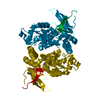
 Components
Components

 X-RAY DIFFRACTION / Number of used crystals: 1
X-RAY DIFFRACTION / Number of used crystals: 1  Sample preparation
Sample preparation SYNCHROTRON / Site:
SYNCHROTRON / Site:  NSLS
NSLS  / Beamline: X4A / Wavelength: 0.9793 Å
/ Beamline: X4A / Wavelength: 0.9793 Å Processing
Processing SAD
SAD Movie
Movie Controller
Controller




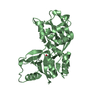
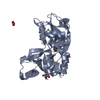
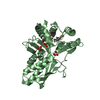

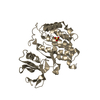

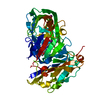


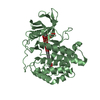
 PDBj
PDBj



